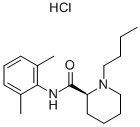99% Purity White Powder Levobupivacaine Powder for Pain-Killer CAS: 27262-47-1
- Fabricante: DEWAEL
- Ensayo del producto: 99%+
- Apariencia:polvo cristalino blanco.
- Lugar de origen: China
- Proceso de dar un título: SGS,ISO9001, GMP
- Cantidad mínima de pedido: 10sol
- detalles del empaque: formas discretas de embalaje para las aduanas paso garantizado
- El tiempo de entrega: Dentro 12 horas después de recibir su pago
- Términos de pago: Western Union, MoneyGram,Bitcoin,Transferencia bancaria
- Envío: ccsme,DHL,Federal Express,UPS,TNT y así sucesivamente.
- Política: Re-envío Política
- capacidad de la fuente: 500-600kg / mes
99% Purity White Powder Levobupivacaine Powder for Pain-Killer CAS: 27262-47-1
Descripition:
Nombre: Levobupivacaine Base
sinónimos:1-Butyl-N-(2,6-dimethylphenyl)-piperidine-2-carboxamide;Chirocaine;levobupivacaína;(2S)-1-Butyl-N-(2,6-dimethylphenyl)piperidine-2α-carboxamide;2′,6′-Pipecoloxylidide, 1-butyl-, L-(-)-;1-Butyl-N-(2,6-dimet;;(2S)-1-Butyl-N-(2,6-diMethylphenyl)-2-piperidinecarboxaMide
CAS:27262-47-1
MF:C18H28N2O
MW:288.43
Punto de fusion:136-137DO
Chemical Properties:White Solid
Uses :Local anaesthetic used for epidural and intrathecal anaesthesia.
Embalaje:1kg/bag

Descripción:
The bupivacaine molecule is a racemic compound.Levobupivacaine is the S-enantiomer of bupivacaine and is thought to have less cardiotoxic potential than the R-enantiomer.The pharmacokinetic parameters of levobupivacaine are similar to those of bupivacaine.
Levobupivacaine has been studied in surgical anaesthesia and for pain management.It can be used for local infiltration,epidural,intrathecal and peripheral nerve blocks.For epidural analgesia it can be given with clonidine.Double-blind comparisons of levobupivacaine and bupivacaine show that their anaesthetic effects are similar.
levobupivacaína (rINN) is a local anaesthetic drug belonging to the amino amide group. It is the S-enantiomer of bupivacaine.
The hydrochloride salt of levobupivacaine, an amide derivative with anesthetic property. Levobupivacaine reversibly binds voltage-gated sodium channels to modulate ionic flux and prevent the initiation and transmission of nerve impulses (stabilizing neuronal membrane), thereby resulting in analgesia and anesthesia. In comparison with racemic bupivacaine, levobupivacaine is associated with less vasodilation and has a longer duration of action.
Levobupivacaine is an amide-type local anaesthetic. Levobupivacaine acts via blockade of voltage-sensitive ion channels in neuronal membranes, preventing transmission of nerve impulses. Localised and reversible anaesthesia is produced by interference with the opening of the sodium channel, which inhibits conduction of the action potential in nerves involved in sensory and motor activity and sympathetic activity. [1] Levobupivacaine displaces 3H-BTX from sodium channels of rat brain synaptosomes with IC50 of 2.9 μM and Hill coefficients of 1.2. When cell membrane is held at -80 mV, -70 mV, -60 mV or -100 mV, Levobupivacaine shows tonic inhibition of sodium channel in GH3 cells with IC50s of 132.1, 37.6, 21.6 y 264 M, respectivamente. [2] Levobupivacaine depresses action potential of isolated axon in vitro. levobupivacaína (1mM) depresses action potential amplitude and maximal rate of rise of action potential (dV/dtmax) in the crayfish giant axons with value of 88 y 81 respectivamente, after perfusion for 15 mín.. [3] Levobupivacaine also displays activity on cardiac ion channels. In isolated ventricular myocytes, the apparent affinity for inactivated state of the sodium channel is 4.8 μM for Levobupivacaine, with a calculated KD of 39μM. On inhibition of cardiac delayed rectifier potassium channels (hKv1.5), the steady-state block for Levobupivacaine (20 M) is 31%, with a calculated KD of 27.3 M. Levobupivacaine may also inhibit cardiac calcium channels. 10 μM Levobupivacaine produces a 50% decrease in contractile force of guinea-pig papillary muscles.
Levobupivacaine Applications:
Clinical Use
Compared to bupivacaine, levobupivacaine is associated with less vasodilation and has a longer duration of action. It is approximately 13 percent less potent (by molarity) than racemic bupivacaine and has a longer motor block onset time.
Indications
Levobupivacaine is indicated for local anaesthesia including infiltration, nerve block, ophthalmic, epidural and intrathecal anaesthesia in adults; and infiltration analgesia in children.
Contraindications
Levobupivacaine is contraindicated for IV regional anaesthesia (IVRA).
Dosificación para la referencia:
Adults:
Surgical anaesthesia epidural block: 50-100mg (using 0.5 % solution) or 75 to 150mg (using 0.75% solution).
Cesarean section: 75-150 mg (using 0.5 percent solution). Spinal cord block: 15 mg (using 0.5 percent solution). Maximum: 150mg/dose; 400 mg/d.
Peripheral nerve blocker 2.5-150mg or 1-2mg/kg (0.4ml/kg) 0.25 or 0.5 per cent solution. No more than 40ml. Maximum: 150mg/dose; 400 mg/d. Penetration anesthesia can be as high as 150 mg (with 0.25% solution).
For the ball week in the program: 37.5-112.5mg (using 0.75% solution). Maximum: 150mg/dose; 400 mg/d.
Pain relief in acute pain delivery: 15-50 mg (with 0.25% solution) as a dosing dose.
Postoperative pain: 10 a 25 mg/h (with a 0.25% solution) as an epidural infusion. Maximum: 150mg/dose; 400 mg/d.
———————————————————————————————————————————————————————————————————————————————————————-
Contacta ahora












-300x300.jpg)




















Comentarios
No hay comentarios aún.